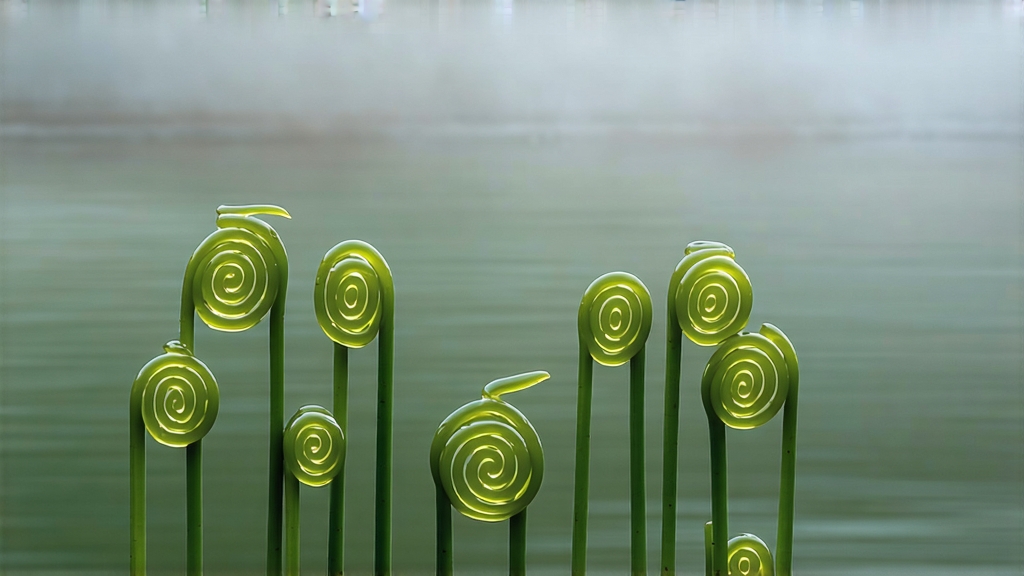
Biluochun, whose name translates literally to “Green Snail Spring,” is one of China’s ten most celebrated teas, yet it remains a quiet legend outside specialist circles. Produced only in a micro-zone straddling Dongting Mountain and Taihu Lake in Jiangsu Province, this tea is prized for an impossible pairing: the explosive fragrance of a flower garden and the gentle umami clarity expected of the finest green teas. To understand Biluochun is to follow the interplay of terroir, history, and craftsmanship that turns a minute spring bud into a cup often described as “drinking liquid embroidery.”
Historical records first mention the tea during the late Tang dynasty, when it was called “Xia Sha Ren Xiang,” or “Scary-Fragrant,” because courtesans picking the leaves along the lake allegedly tucked them into their bodices, allowing body heat to release an intoxicating perfume. The Kangxi Emperor, touring the region in 1699, rechristened the tea “Biluochun” after its snail-shell shape and harvest season. Court annals note that the imperial entourage consumed the tea within hours of plucking, a logistical feat that required relay riders galloping through the night—an early supply-chain miracle that prefigures today’s refrigerated express shipments.
The tea belongs to a small-leaf cultivar group locally termed “Dongting Qunti,” a landrace that has adapted for centuries to the lake’s humid air and mineral-rich, quartz-granite soils. Unlike the neat hedgerows of modern clonal gardens, Biluochun bushes rise in irregular thickets among fruit trees—peach, plum, and apricot—whose blossoms deposit pollen on tea leaves, contributing to the cultivar’s signature fruity bouquet. Spring mists rolling off Taihu Lake filter sunlight, slowing photosynthesis and concentrating amino acids, especially L-theanine, which translates into a sweet, almost creamy mouthfeel.
Harvest begins when the overnight temperature stabilizes above 10 °C, usually between the Qingming and Grain Rain solar terms. Only the “one bud with one just-unfurled leaf” is taken, yielding roughly 110,000 pluckings per kilogram of finished tea. Pickers work in four-hour shifts to keep leaf temperature low; bamboo baskets are lined with nettle cloth so no bruising occurs. Within thirty minutes the harvest must reach the village workshop, where the most critical phase—kill-green—awaits.
Traditional kill-green is performed on a drum-shaped wok heated to 180 °C. A master fryer, barefoot to feel vibration, tosses 250 g of leaves in a motion that resembles flipping a pancake while drawing the Chinese character for “rice.” The goal is to destroy leaf enzymes within ninety seconds without baking the surface. As moisture drops from 76 % to 58 %, the fryer’s free hand sprinkles the tiniest amount of chilled lake water—never more than 5 ml—to create a burst of steam that fixes the jade color. The leaves are then transferred to a straw mat where three workers knead and twirl them simultaneously, a technique called “cuo tuan.” Fingers curl inward, applying pressure along the vein so that the leaf wraps around itself like a watch spring. When the spiral holds, the tea is returned to a cooler wok (70 °C) for twenty minutes of final drying, reducing moisture to 5 %. The entire process, from pluck to finished maocha, takes less than four hours, preserving volatile aromatics that would otherwise dissipate overnight.
Modern factories replicate these steps with automated drums and belt dryers, yet the highest grades—Special #1 and Supreme #0—are still handmade by certified inheritors of the intangible cultural heritage. A single master oversees no more than 3 kg per day, roughly the output one machine line produces in an hour. Connoisseurs insist the difference lies in elasticity: hand-processed leaves rehydrate in the cup into a living bud that stands upright before sinking, whereas machine tea unfurls horizontally.
To brew Biluochun Western-style, use 2 g of leaf per 100 ml of water at 75 °C in a glass jug; steep 90 seconds, strain, and enjoy two further infusions adding fifteen seconds each time. The Chinese gongfu approach is more theatrical: a tall, pencil-thin glass is filled to one-third with 80 °C water, then 3 g of tea is dropped in from 20 cm height—a maneuver christened “Dragon Drops from Heaven.” The buds descend, releasing silver bubbles that carry floral notes to the